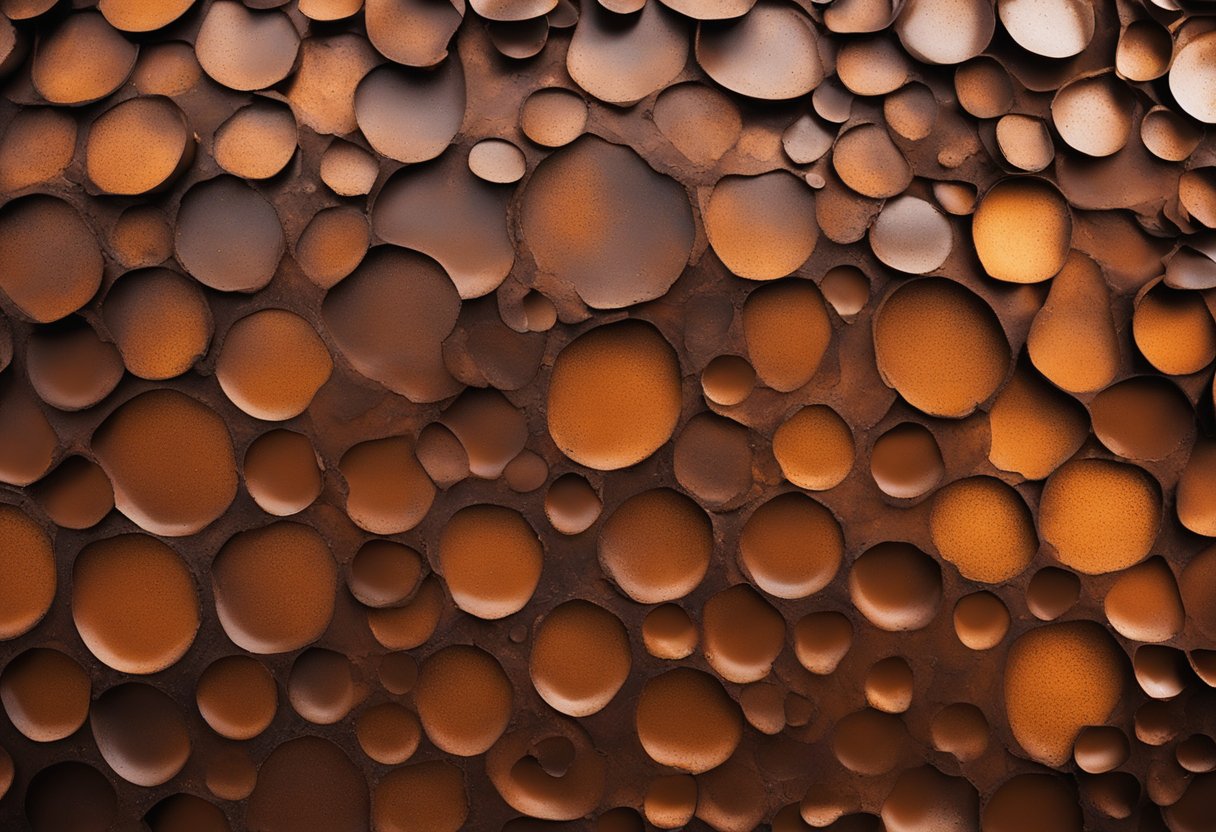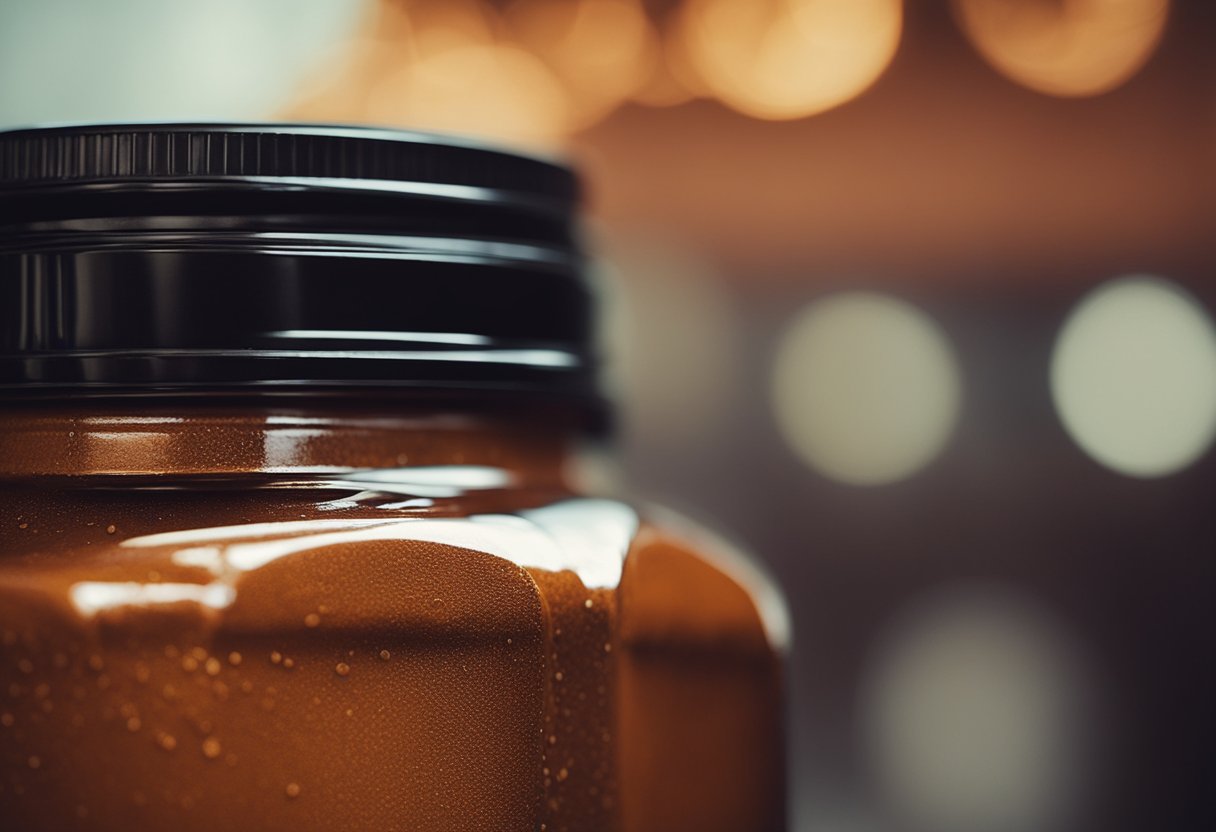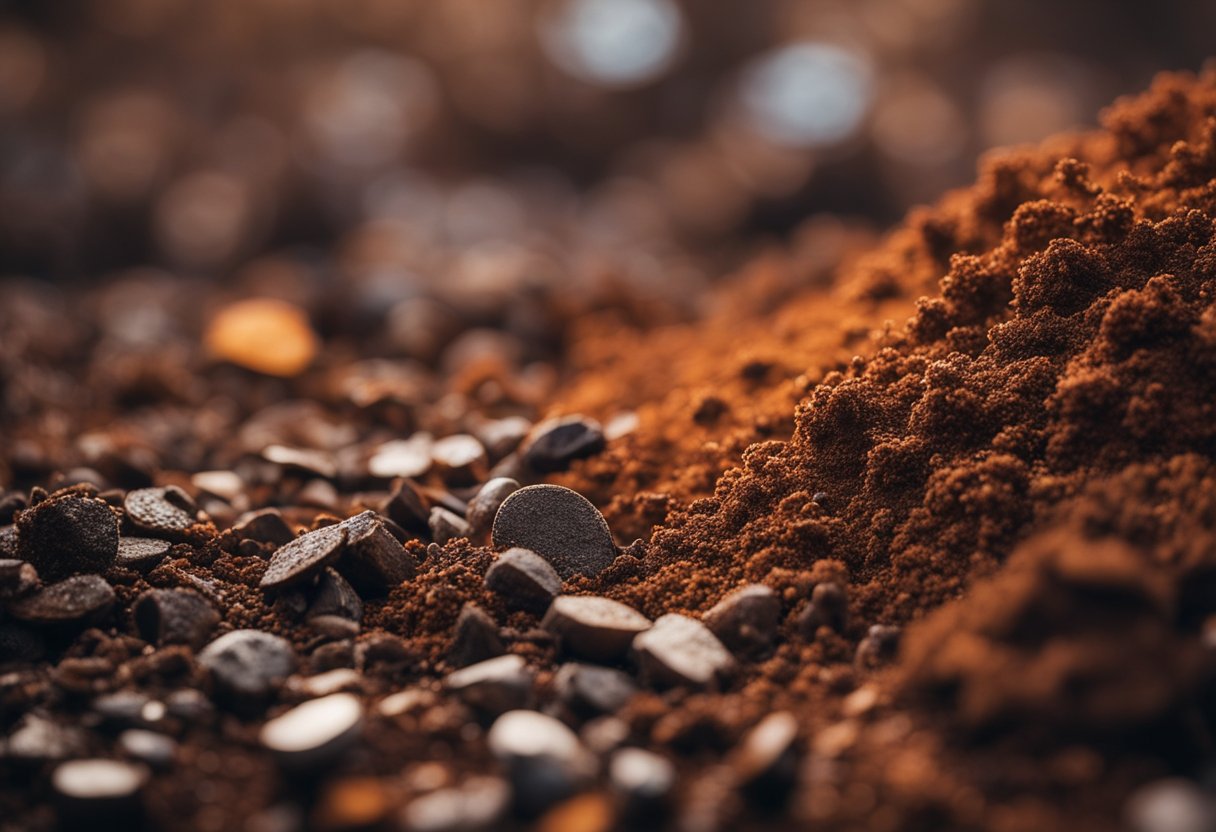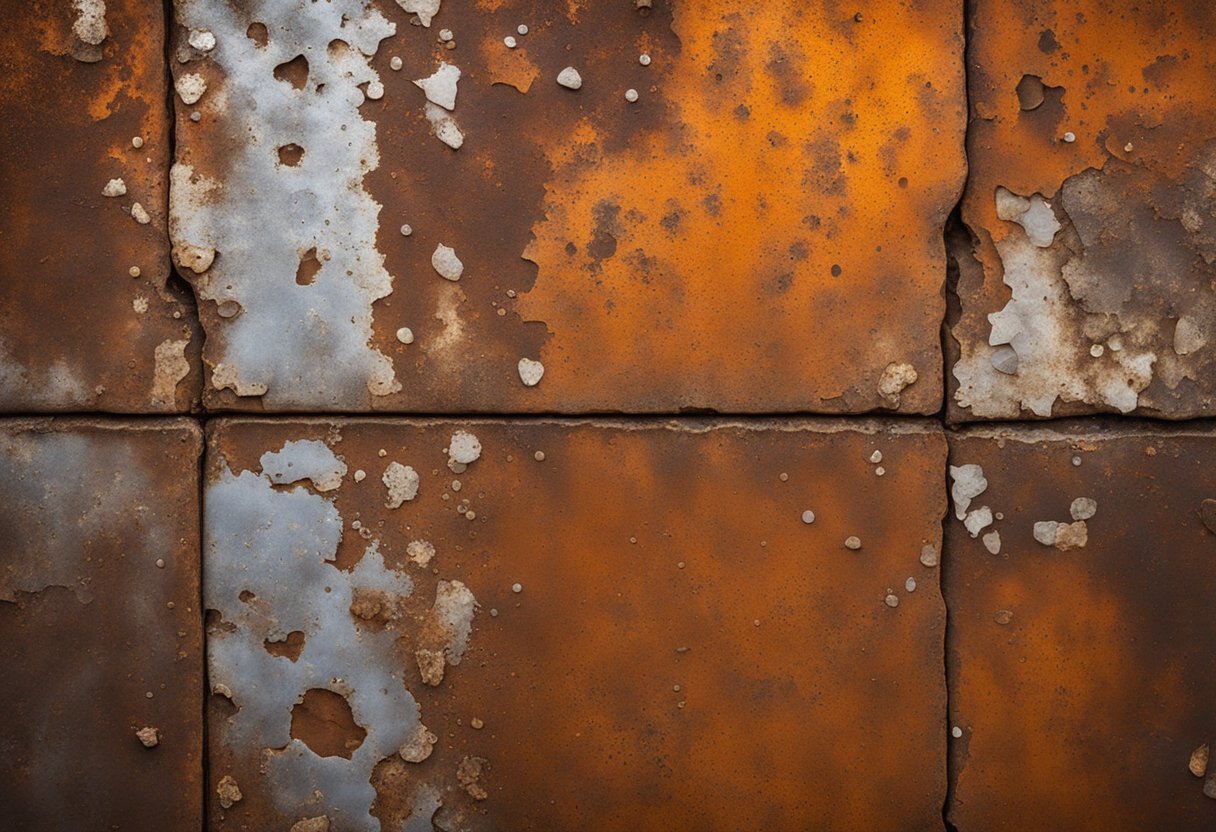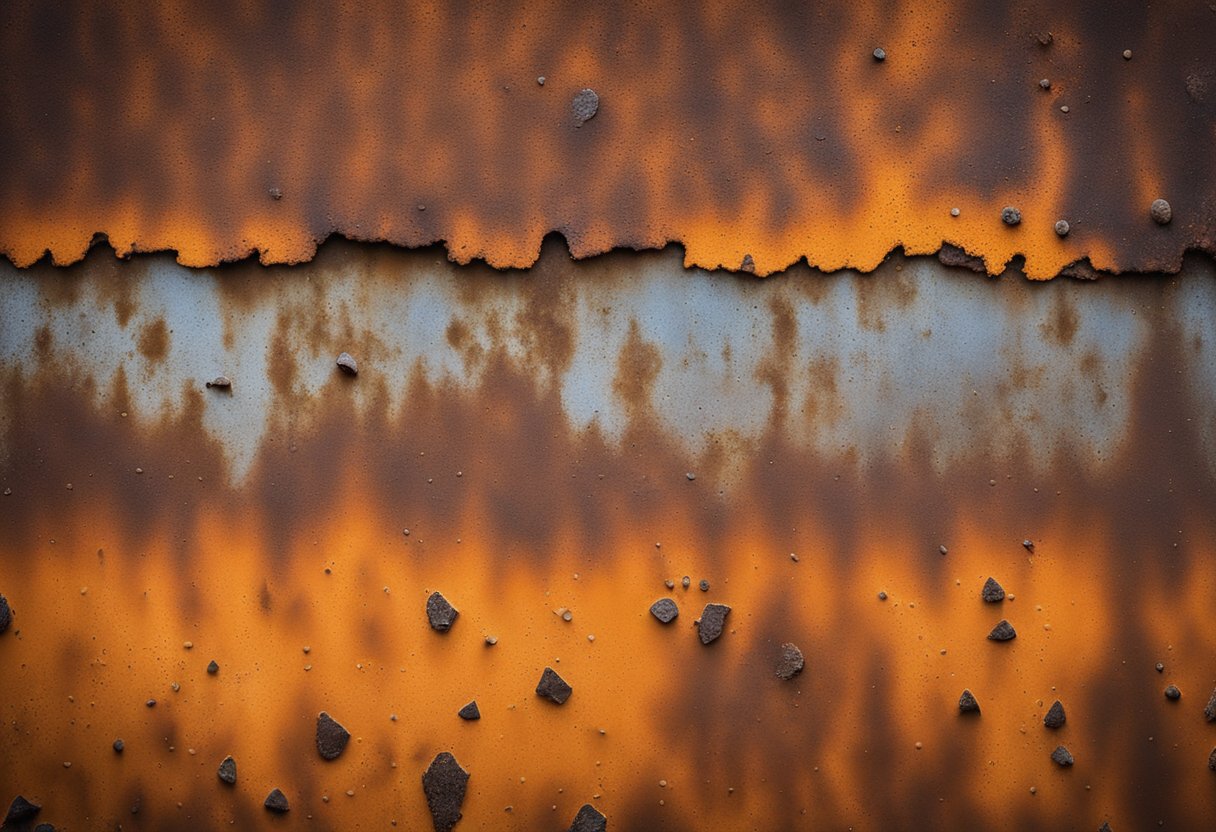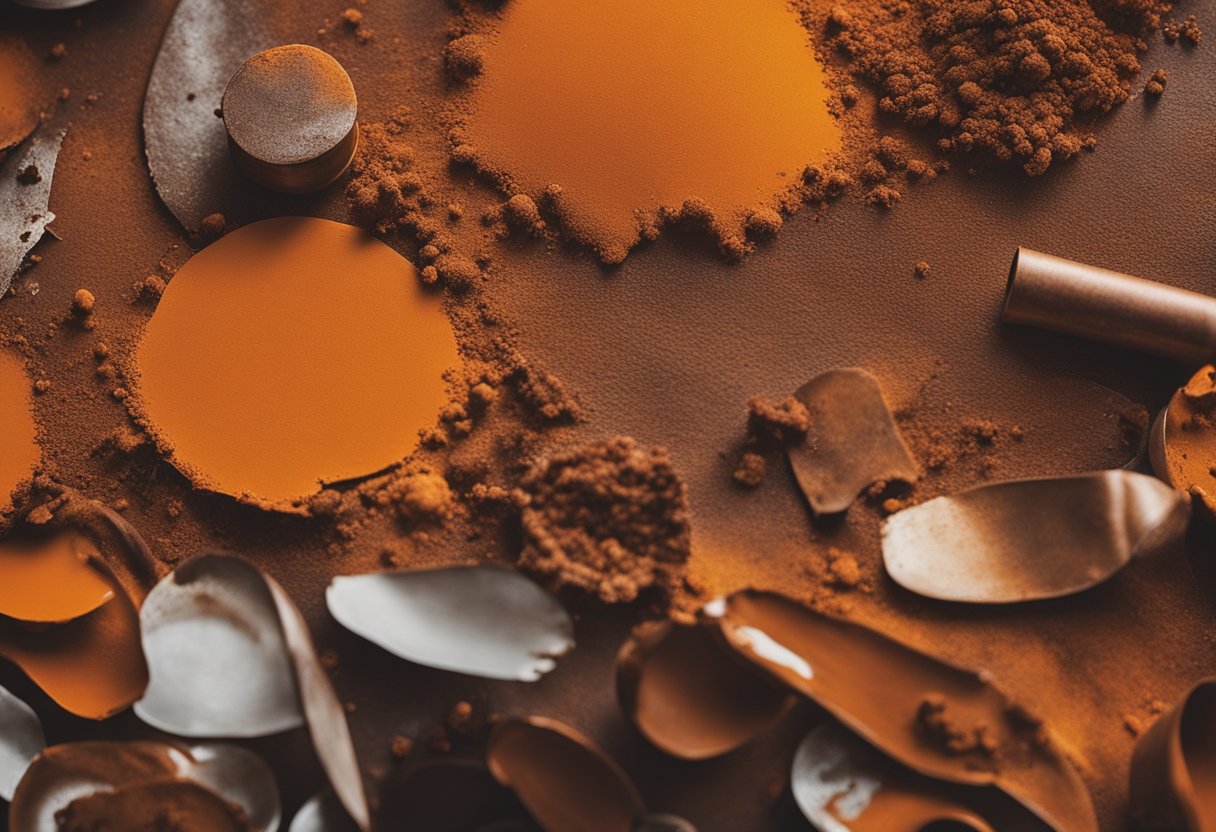Rust is a beautiful and complex color that can add a touch of warmth and character to any design or artwork. However, creating this color can be challenging, especially if you are not familiar with color theory and mixing. In this article, I will explain what colors make rust and provide practical tips and techniques to help you achieve this color with confidence.
To start, it is essential to understand the color rust and its characteristics. Rust is a reddish-brown color that is often associated with metal oxidation, corrosion, and decay. It is a warm and earthy color that can evoke feelings of nostalgia, comfort, and rustic charm. Rust can also vary in shade and intensity depending on the environment, lighting, and materials.
To create rust, you will need to mix specific primary colors in the right proportions. While there are many ways to achieve this color, the most common method involves blending red, orange, and brown hues. By experimenting with different ratios and shades, you can adjust the color to your liking and create variations of rust that suit your project.
Key Takeaways
- Rust is a reddish-brown color associated with metal oxidation and decay.
- To create rust, you need to mix primary colors like red, orange, and brown.
- Adjusting the ratios and shades of the colors can help you achieve different variations of rust.
Understanding the Color Rust
https://www.youtube.com/watch?v=9M9cVtR6daU&embed=true
As someone who has worked with colors for a long time, I can tell you that rust is a fascinating color. Rust is an earthy color that is reminiscent of autumn leaves and sunsets. It is a color that is both warm and inviting, yet also rugged and raw.
Rust is a reddish-brown color that is created when iron reacts with oxygen in the presence of moisture. This process is called oxidation, and it is what causes metal to rust. The color rust is often associated with the color of rusting metal, but it can also be found in nature in the form of soil, rocks, and clay.
Rust is a member of the family of earth tones, which includes colors like brown, beige, and tan. Earth tones are colors that are inspired by nature, and they are often used in interior design to create a warm and inviting atmosphere. Rust is a particularly popular earth tone because it is both versatile and timeless.
If you are looking to incorporate rust into your color palette, there are a few things to keep in mind. Rust is a warm color, so it pairs well with other warm colors like yellows, oranges, and reds. It also works well with neutral colors like beige, cream, and gray.
When working with rust, it’s important to remember that it is a bold color that can easily overpower other colors. To avoid this, consider using rust as an accent color rather than a primary color. For example, you could use rust-colored throw pillows or curtains to add a pop of color to a neutral room.
In conclusion, rust is a beautiful and versatile color that can add warmth and depth to any color palette. Whether you are working with rust-colored metal or incorporating rust into your interior design, this earthy color is sure to make a statement.
Primary Colors Needed
To make the color rust, I need to start with the primary colors: red, yellow, and blue. These colors are the building blocks of all other colors. By mixing these primary colors, I can create secondary colors, including orange, green, and purple.
Rust is a reddish-brown color, so I will need to focus on mixing red and yellow. By mixing these two colors, I can create a range of orange shades, which are the closest to rust. I can also add a touch of blue to create a darker, more muted rust color.
It’s important to note that the exact shade of rust will depend on the specific shades of red, yellow, and blue that I use. For example, a brighter, more vibrant red will create a brighter, more vibrant rust color. On the other hand, a darker, more muted red will create a darker, more muted rust color.
To make the process easier, I can use a color wheel to help me understand how to mix different colors. A color wheel is a visual representation of the relationships between different colors. By using a color wheel, I can see which colors are complementary and which colors will mix well together.
Overall, to make the color rust, I need to start with the primary colors of red, yellow, and blue. By mixing these colors together, I can create a range of orange shades, which are the closest to rust. I can also add a touch of blue to create a darker, more muted rust color.
Creating Rust with Paint
https://www.youtube.com/watch?v=ybdWOeCLiS0&embed=true
Creating a rust effect with paint is a great way to add texture and depth to your artwork. The key to achieving a realistic rust effect is to use the right colors and application techniques.
Color selection
To create a rust effect with paint, you’ll need to select the right colors. Earth tones like burnt sienna, raw umber, and yellow ochre are great colors to start with. These colors mimic the natural hues found in rusted metal and serve as a solid foundation for creating a realistic effect.
Mixing the colors
Once you have selected the colors, the next step is to mix them in the right ratios. To create a rust color, you can mix black, orange, and brown. You can also mix red and green to create a brownish-red color that resembles rust.
Application techniques
There are several application techniques that you can use to create a rust effect. Stippling and dry brushing are two popular techniques that can help you achieve a realistic rust effect. Stippling involves using a brush to create small dots of color, while dry brushing involves using a brush with very little paint to create a subtle effect.
Layering
Layering is key to creating a realistic rust effect. Start by applying a base color that resembles metal, and then layer on the rust color using a brush or sponge. You can also use a toothbrush to splatter the rust color onto the project, creating a more natural and organic effect.
Using a palette
When mixing and applying the colors, it’s important to use a palette to keep the colors organized and to prevent them from drying out. A palette can also help you mix the colors in the right ratios, making it easier to achieve the desired effect.
Creating a rust effect with paint takes practice and patience, but with the right colors and application techniques, you can achieve a realistic and eye-catching effect that will add depth and texture to your artwork.
Special Techniques for Realistic Rust
https://www.youtube.com/watch?v=4XhvnqoIy38&embed=true
When it comes to creating a realistic rust finish, there are a few special techniques you can use to achieve the desired effect. Here are some of my favorite techniques:
Layering Colors
Layering colors is key to creating a realistic rust finish. Start with a base color that mimics the natural hues found in rusted metal, such as burnt sienna, raw umber, or yellow ochre. Then, layer on additional colors to create depth and texture. For example, you could add a layer of orange or bright red to create highlights, or a darker brown to create shadows.
Highlighting Edges
Highlighting the edges of your rusted object can help create a weathered look. Use a small brush and a lighter color, such as yellow iron oxide or Sennelier brown, to paint along the edges of the object. This will create the illusion of wear and tear, and make the object look more realistic.
Dry Brushing
Dry brushing is another technique that can help create a realistic rust finish. To dry brush, dip your brush into the paint and then wipe most of it off onto a paper towel. Then, lightly drag the brush over the surface of the object, focusing on the raised areas. This will create a subtle texture that mimics the look of rust.
Using Washes
Washes are a great way to add depth and texture to your rusted object. To create a wash, mix a small amount of paint with water until it is thin and runny. Then, apply the wash to the surface of the object, focusing on the recessed areas. This will create the illusion of depth and make the object look more realistic.
By using these special techniques, you can create a realistic rust finish that will make your object look like it has been weathered and worn over time. Experiment with different colors and techniques to find the perfect combination for your project.
Impact of Environment on Rust Color
As I mentioned earlier, rust is formed when iron reacts with oxygen and water. However, the color of rust can be influenced by various environmental factors. Let’s take a look at some of these factors and how they can affect the color of rust.
Temperature
Temperature can play a significant role in the formation of rust. Higher temperatures can accelerate the rate of corrosion, resulting in a faster formation of rust. This can lead to a darker color of rust. On the other hand, lower temperatures can slow down the formation of rust, resulting in a lighter color of rust.
Humidity
Humidity is another important factor that can affect the color of rust. Higher humidity levels can lead to more moisture in the air, which can speed up the formation of rust. This can result in a darker color of rust. Conversely, lower humidity levels can slow down the formation of rust, resulting in a lighter color of rust.
Oxygen
Oxygen is a crucial component in the formation of rust. However, the amount of oxygen present can also affect the color of rust. Higher levels of oxygen can lead to a faster formation of rust, resulting in a darker color of rust. Lower levels of oxygen can slow down the formation of rust, resulting in a lighter color of rust.
Water
Water is another important component in the formation of rust. However, the type of water present can also affect the color of rust. For example, saltwater can lead to a faster formation of rust, resulting in a darker color of rust. Freshwater can slow down the formation of rust, resulting in a lighter color of rust.
Corrosion
Corrosion is the process by which metal breaks down due to chemical reactions with its environment. The level of corrosion can also affect the color of rust. Higher levels of corrosion can lead to a darker color of rust, while lower levels of corrosion can result in a lighter color of rust.
In conclusion, the color of rust can be influenced by various environmental factors, such as temperature, humidity, oxygen, water, and corrosion. Understanding these factors can help us better predict and control the color of rust in different environments.
Rust in Art and Design
As an artist, I have always been fascinated by the unique color and texture of rust. Rust can add depth and character to paintings, making them look more realistic and weathered. In fact, rust is a popular color choice among landscape painters, who use it to capture the natural beauty of the earth.
To create a rust color in painting, artists often use a combination of sienna, burnt sienna, ochre, umber, and raw umber. These colors can be mixed in various proportions to achieve different shades of rust. For example, adding more sienna and burnt sienna can create a brighter, more orange rust color, while adding more umber and raw umber can create a darker, more brownish rust color.
Acrylic paints are a popular choice for creating a rust color in paintings. They are easy to use, dry quickly, and can be mixed with water to create different shades and textures. Watercolors can also be used to create a rust color, but they require more skill and patience to achieve the desired effect.
To create a faux rust effect on furniture or other objects, artists can use rust paint or iron oxide pigment mixed with linseed oil. The paint or pigment is applied to the surface with a palette knife or brush, and left to dry for several hours or overnight. A topcoat of varnish can be applied to protect the finish and give it a vintage look.
When using rust color paint, it is important to keep in mind the proportions of the colors used, as well as the drying time. Adding too much water or paint can cause the colors to become muddy or lose their vibrancy. It is also important to choose the right type of paint for the surface being painted, such as canvas or furniture.
Overall, rust is a versatile and unique color that can add depth and character to any art or design project. With the right materials and techniques, artists and designers can create beautiful and realistic rust effects that will stand the test of time.
Practical Application of Rust Colors
When it comes to creating a realistic rust effect with paint, there are a few practical applications to keep in mind. Whether you’re working with acrylics or oils, there are certain colors and techniques that can help you achieve the desired effect.
First and foremost, it’s important to start with a base color that is dark brown or black. This will provide a solid foundation for the rust color to build upon. From there, you can mix in other colors to create the desired shade of rust.
One effective technique for creating a rust effect is to use a paper towel or rag to dab the paint onto the surface. This can help create a textured look that mimics the rough, uneven surface of rusted metal. You can also experiment with different thicknesses of paint to create a more realistic effect.
When it comes to color mixing, there are a few key colors to keep in mind. Yellow ochre and copper can both be effective in creating a rust color, while orange paint can help add warmth and depth. Black paint can also be useful for creating shadows and adding depth to the rust effect.
In addition to color mixing, it’s important to consider the surface you’re painting on. Rust can often be found on metal surfaces, so painting on a surface that resembles metal, such as a wall or piece of paper, can help create a more realistic effect.
Finally, practice is key when it comes to creating a rust effect. Experiment with different colors and techniques until you find the combination that works best for your project. With a little patience and perseverance, you can create a rust effect that adds depth and character to your artwork.
Conclusion
In conclusion, rust is a unique color that can be created by combining specific hues. By mixing orange, red, and brown, we can achieve the color rust. Additionally, black or brown paint can be added to an existing reddish hue to create a rusted effect.
It is important to note that rust is not a single color, but rather a combination of multiple chemical compounds that each contribute their own distinct colors. As iron or steel oxidizes when exposed to moisture and oxygen, it develops the distinctive reddish-brown coating known as rust.
When selecting acrylic paint colors for a rust effect, it’s best to start with earth tones. Colors like burnt sienna, raw umber, and yellow ochre mimic the natural hues found in rusted metal and serve as a solid foundation for creating a realistic effect. Layering is also key to achieving a realistic rust effect.
Overall, understanding the colors that make up rust is important for artists, designers, and anyone looking to create a rusted effect. By using the right combination of colors and techniques, it is possible to create a realistic and visually appealing rust effect.
Frequently Asked Questions
How can I create a Rust Brown color?
To create a Rust Brown color, you need to mix several colors. The primary colors you will need are yellow, red, and blue. Mix yellow and blue to make green, and then add red to get brown. You can also mix orange with brown to get a Rust Brown shade.
What colors can I mix to achieve a Rust Brown shade?
To achieve a Rust Brown shade, you can mix orange, red, and brown. The color Rust occurs when orange, red, and brown are combined.
What are some tips for getting the perfect Rust Brown hue?
To get the perfect Rust Brown hue, try experimenting with different ratios of the colors you are using. Start with a small amount of each color and gradually add more until you achieve the desired shade. It’s also important to use high-quality paint and to mix the colors thoroughly.
How do I make Rust Brown paint?
To make Rust Brown paint, you will need high-quality oil paint, a palette or mixing surface, two to three shades of brown and orange paint, white and black paint for adjustments, solvent/thinner and linseed oil. Mix the colors thoroughly until you achieve the desired shade.
What is the difference between Rust Brown and Rust Orange?
Rust Brown is a darker and more subdued shade than Rust Orange. Rust Brown is a combination of orange, red, and brown, while Rust Orange is a brighter shade of orange that resembles the color of rusted metal.
Can Rust Brown be used as a base for other colors?
Yes, Rust Brown can be used as a base for other colors. It’s a versatile color that can be used in a variety of painting and decorating projects. You can mix Rust Brown with other colors to create new shades and hues.

Hi, I’m Sal Muller of Tooltrip.com. My DIY experience led me to understand essential power tools for home projects. Tooltrip.com guides enthusiasts and professionals in choosing right tools for any job. I provide concise top tool reviews for easier, efficient DIY.

